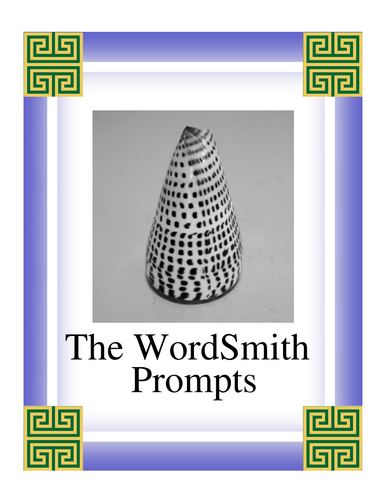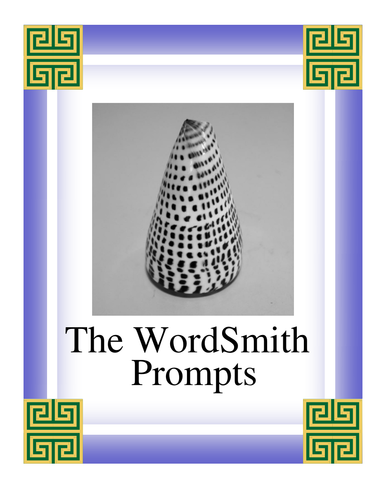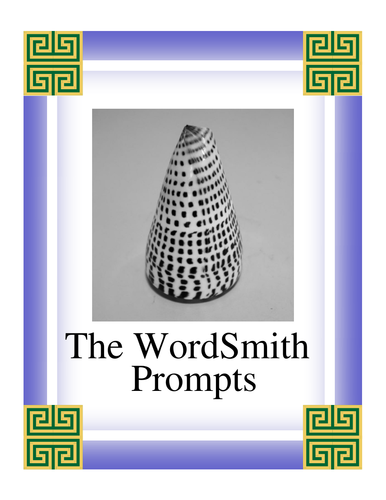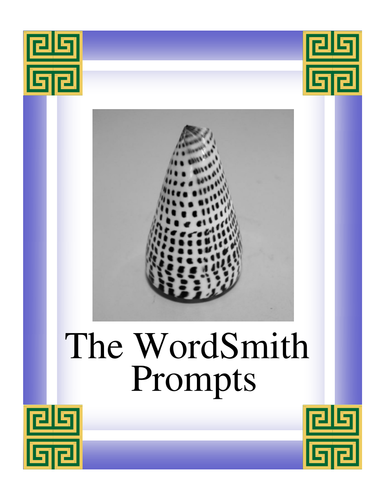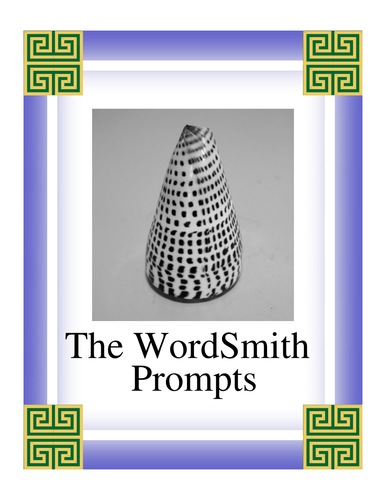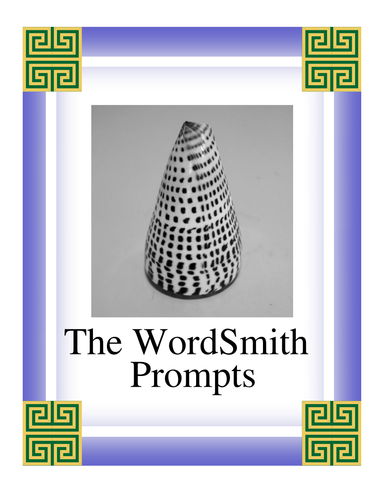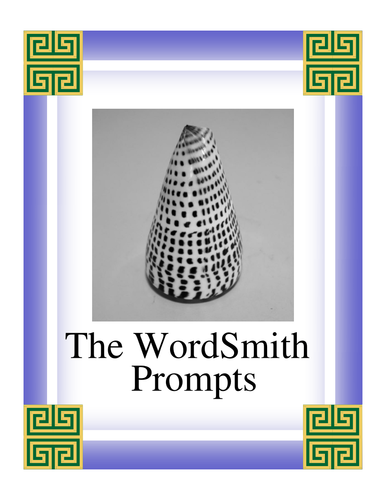
407Uploads
80k+Views
8k+Downloads
English

The WordSmith Literacy Units for KS2 (2)
This is the second of seventeen stand-alone literacy units built around the highly acclaimed animal adventure story ‘Paka Mdogo – Little Cat’. Each unit is based on a single chapter from the book, and includes the text itself…so over the course of a term children will be able to enjoy the whole story as a piece of fiction ‘with excellent literary credentials’ (Library Thing review) – appropriate to Years 4 to 6 but offering engagement, suspense, humour and challenge to readers of all ages. The ‘Paka Mdogo’ series has been described as ‘Books for Thinking Children’ but it also has a strong appeal to thinking adults since it addresses, in a wholly refreshing way, a large number of issues important to us all.
Each unit includes a summary of ‘the story so far’ sufficient to allow a full understanding of events within the chapter, without prior reading. Teachers can therefore, if they wish, use the units selectively, making use of the ongoing summaries to bridge any narrative gaps and keep the class eager to know what happens next.
The units are aligned to the general objectives of the National Curriculum, and teachers making use of them can be assured that their students will be exposed to a wide range of reading, writing, speaking and listening tasks – and thinking activities – designed to promote those objectives with minimal tribulation and maximum delight.
‘Thinking activities’? Imaginative prompts that challenge students to read into, and often beyond, the written text.
Study tasks include the full range of question types (single-answer, multiple choice, closed, open, evaluative) and a variety of writing and speaking activities (personal, narrative, expository, analytical, persuasive, interactive).
Questions on the illustrations are included to help enhance students’ visual, as well as textual, literacy.
Some practicalities:
• The units are in printable pdf format, and can be used either on-screen or in photocopy from the master file.
• Each page of the unit carries one page of text from the chapter, a study task based on it, and working spaces. Additional, more broadly-based study tasks span the whole chapter.
• Students given print copies can use either the working spaces or a separate workbook. Those working on-screen will be able to add their responses by means of a text insertion tool or the comments/sticky notes function, depending on the program used to open the pdf file – or, again, in a separate workbook.
• Two editions of the unit – Teaching and Student – are included in the resource, together with a copy of the Teacher Notes, a map of the fictional Baragandiri National Park and a one-page summary of the whole story.

The WordSmith Literacy Units for KS2 (1)
This is the first of seventeen stand-alone literacy units built around the highly acclaimed animal adventure story ‘Paka Mdogo – Little Cat’. Each unit is based on a single chapter from the book, and includes the text itself…so over the course of a term children will be able to enjoy the whole story as a piece of fiction ‘with excellent literary credentials’ (Library Thing review) – appropriate to Years 4 to 6 but offering engagement, suspense, humour and challenge to readers of all ages. The ‘Paka Mdogo’ series has been described as ‘Books for Thinking Children’ but it also has a strong appeal to thinking adults since it addresses, in a wholly refreshing way, a large number of issues important to us all.
Each unit includes a summary of ‘the story so far’ sufficient to allow a full understanding of events within the chapter, without prior reading. Teachers can therefore, if they wish, use the units selectively, making use of the ongoing summaries to bridge any narrative gaps and keep the class eager to know what happens next.
The units are aligned to the general objectives of the National Curriculum, and teachers making use of them can be assured that their students will be exposed to a wide range of reading, writing, speaking and listening tasks – and thinking activities – designed to promote those objectives with minimal tribulation and maximum delight.
‘Thinking activities’? Imaginative prompts that challenge students to read into, and often beyond, the written text.
Study tasks include the full range of question types (single-answer, multiple choice, closed, open, evaluative) and a variety of writing and speaking activities (personal, narrative, expository, analytical, persuasive, interactive).
Questions on the illustrations are included to help enhance students’ visual, as well as textual, literacy.
Some practicalities:
• The units are in printable pdf format, and can be used either on-screen or in photocopy from the master file.
• Each page of the unit carries one page of text from the chapter, a study task based on it, and working spaces. Additional, more broadly-based study tasks span the whole chapter.
• Students given print copies can use either the working spaces or a separate workbook. Those working on-screen will be able to add their responses by means of a text insertion tool or the comments/sticky notes function, depending on the program used to open the pdf file – or, again, in a separate workbook.
• Two editions of the unit – Teaching and Student – are included in the resource, together with a copy of the Teacher Notes, a map of the fictional Baragandiri National Park and a one-page summary of the whole story.

The WordSmith Literacy Units for KS2 (4)
This is the fourth of seventeen stand-alone literacy units built around the highly acclaimed animal adventure story ‘Paka Mdogo – Little Cat’. Each unit is based on a single chapter from the book, and includes the text itself…so over the course of a term children will be able to enjoy the whole story as a piece of fiction ‘with excellent literary credentials’ (Library Thing review) – appropriate to Years 4 to 6 but offering engagement, suspense, humour and challenge to readers of all ages. The ‘Paka Mdogo’ series has been described as ‘Books for Thinking Children’ but it also has a strong appeal to thinking adults since it addresses, in a wholly refreshing way, a large number of issues important to us all.
Each unit includes a summary of ‘the story so far’ sufficient to allow a full understanding of events within the chapter, without prior reading. Teachers can therefore, if they wish, use the units selectively, making use of the ongoing summaries to bridge any narrative gaps and keep the class eager to know what happens next.
The units are aligned to the general objectives of the National Curriculum, and teachers making use of them can be assured that their students will be exposed to a wide range of reading, writing, speaking and listening tasks – and thinking activities – designed to promote those objectives with minimal tribulation and maximum delight.
‘Thinking activities’? Imaginative prompts that challenge students to read into, and often beyond, the written text.
Study tasks include the full range of question types (single-answer, multiple choice, closed, open, evaluative) and a variety of writing and speaking activities (personal, narrative, expository, analytical, persuasive, interactive).
Questions on the illustrations are included to help enhance students’ visual, as well as textual, literacy.
Some practicalities:
• The units are in printable pdf format, and can be used either on-screen or in photocopy from the master file.
• Each page of the unit carries one page of text from the chapter, a study task based on it, and working spaces. Additional, more broadly-based study tasks span the whole chapter.
• Students given print copies can use either the working spaces or a separate workbook. Those working on-screen will be able to add their responses by means of a text insertion tool or the comments/sticky notes function, depending on the program used to open the pdf file – or, again, in a separate workbook.
• Two editions of the unit – Teaching and Student – are included in the resource, together with a copy of the Teacher Notes, a map of the fictional Baragandiri National Park and a one-page summary of the whole story.

The WordSmith Literacy Units for KS2 (3)
This is the third of seventeen stand-alone literacy units built around the highly acclaimed animal adventure story ‘Paka Mdogo – Little Cat’. Each unit is based on a single chapter from the book, and includes the text itself…so over the course of a term children will be able to enjoy the whole story as a piece of fiction ‘with excellent literary credentials’ (Library Thing review) – appropriate to Years 4 to 6 but offering engagement, suspense, humour and challenge to readers of all ages. The ‘Paka Mdogo’ series has been described as ‘Books for Thinking Children’ but it also has a strong appeal to thinking adults since it addresses, in a wholly refreshing way, a large number of issues important to us all.
Each unit includes a summary of ‘the story so far’ sufficient to allow a full understanding of events within the chapter, without prior reading. Teachers can therefore, if they wish, use the units selectively, making use of the ongoing summaries to bridge any narrative gaps and keep the class eager to know what happens next.
The units are aligned to the general objectives of the National Curriculum, and teachers making use of them can be assured that their students will be exposed to a wide range of reading, writing, speaking and listening tasks – and thinking activities – designed to promote those objectives with minimal tribulation and maximum delight.
‘Thinking activities’? Imaginative prompts that challenge students to read into, and often beyond, the written text.
Study tasks include the full range of question types (single-answer, multiple choice, closed, open, evaluative) and a variety of writing and speaking activities (personal, narrative, expository, analytical, persuasive, interactive).
Questions on the illustrations are included to help enhance students’ visual, as well as textual, literacy.
Some practicalities:
• The units are in printable pdf format, and can be used either on-screen or in photocopy from the master file.
• Each page of the unit carries one page of text from the chapter, a study task based on it, and working spaces. Additional, more broadly-based study tasks span the whole chapter.
• Students given print copies can use either the working spaces or a separate workbook. Those working on-screen will be able to add their responses by means of a text insertion tool or the comments/sticky notes function, depending on the program used to open the pdf file – or, again, in a separate workbook.
• Two editions of the unit – Teaching and Student – are included in the resource, together with a copy of the Teacher Notes, a map of the fictional Baragandiri National Park and a one-page summary of the whole story.

The WordSmith Literacy Units for KS2 (9)
This is the ninth of seventeen stand-alone literacy units built around the highly acclaimed animal adventure story ‘Paka Mdogo – Little Cat’. Each unit is based on a single chapter from the book, and includes the text itself…so over the course of a term children will be able to enjoy the whole story as a piece of fiction ‘with excellent literary credentials’ (Library Thing review) – appropriate to Years 4 to 6 but offering engagement, suspense, humour and challenge to readers of all ages. The ‘Paka Mdogo’ series has been described as ‘Books for Thinking Children’ but it also has a strong appeal to thinking adults since it addresses, in a wholly refreshing way, a large number of issues important to us all.
Each unit includes a summary of ‘the story so far’ sufficient to allow a full understanding of events within the chapter, without prior reading. Teachers can therefore, if they wish, use the units selectively, making use of the ongoing summaries to bridge any narrative gaps and keep the class eager to know what happens next.
The units are aligned to the general objectives of the National Curriculum, and teachers making use of them can be assured that their students will be exposed to a wide range of reading, writing, speaking and listening tasks – and thinking activities – designed to promote those objectives with minimal tribulation and maximum delight.
‘Thinking activities’? Imaginative prompts that challenge students to read into, and often beyond, the written text.
Study tasks include the full range of question types (single-answer, multiple choice, closed, open, evaluative) and a variety of writing and speaking activities (personal, narrative, expository, analytical, persuasive, interactive).
Questions on the illustrations are included to help enhance students’ visual, as well as textual, literacy.
Some practicalities:
• The units are in printable pdf format, and can be used either on-screen or in photocopy from the master file.
• Each page of the unit carries one page of text from the chapter, a study task based on it, and working spaces. Additional, more broadly-based study tasks span the whole chapter.
• Students given print copies can use either the working spaces or a separate workbook. Those working on-screen will be able to add their responses by means of a text insertion tool or the comments/sticky notes function, depending on the program used to open the pdf file – or, again, in a separate workbook.
• Two editions of the unit – Teaching and Student – are included in the resource, together with a copy of the Teacher Notes, a map of the fictional Baragandiri National Park and a one-page summary of the whole story.

The WordSmith Literacy Units for KS2 (13)
This is the thirteenth of seventeen stand-alone literacy units built around the highly acclaimed animal adventure story ‘Paka Mdogo – Little Cat’. Each unit is based on a single chapter from the book, and includes the text itself…so over the course of a term children will be able to enjoy the whole story as a piece of fiction ‘with excellent literary credentials’ (Library Thing review) – appropriate to Years 4 to 6 but offering engagement, suspense, humour and challenge to readers of all ages. The ‘Paka Mdogo’ series has been described as ‘Books for Thinking Children’ but it also has a strong appeal to thinking adults since it addresses, in a wholly refreshing way, a large number of issues important to us all.
Each unit includes a summary of ‘the story so far’ sufficient to allow a full understanding of events within the chapter, without prior reading. Teachers can therefore, if they wish, use the units selectively, making use of the ongoing summaries to bridge any narrative gaps and keep the class eager to know what happens next.
The units are aligned to the general objectives of the National Curriculum, and teachers making use of them can be assured that their students will be exposed to a wide range of reading, writing, speaking and listening tasks – and thinking activities – designed to promote those objectives with minimal tribulation and maximum delight.
‘Thinking activities’? Imaginative prompts that challenge students to read into, and often beyond, the written text.
Study tasks include the full range of question types (single-answer, multiple choice, closed, open, evaluative) and a variety of writing and speaking activities (personal, narrative, expository, analytical, persuasive, interactive).
Questions on the illustrations are included to help enhance students’ visual, as well as textual, literacy.
Some practicalities:
• The units are in printable pdf format, and can be used either on-screen or in photocopy from the master file.
• Each page of the unit carries one page of text from the chapter, a study task based on it, and working spaces. Additional, more broadly-based study tasks span the whole chapter.
• Students given print copies can use either the working spaces or a separate workbook. Those working on-screen will be able to add their responses by means of a text insertion tool or the comments/sticky notes function, depending on the program used to open the pdf file – or, again, in a separate workbook.
• Two editions of the unit – Teaching and Student – are included in the resource, together with a copy of the Teacher Notes, a map of the fictional Baragandiri National Park and a one-page summary of the whole story.

The WordSmith Literacy Units for KS2 (15)
This is the fifteenth of seventeen stand-alone literacy units built around the highly acclaimed animal adventure story ‘Paka Mdogo – Little Cat’. Each unit is based on a single chapter from the book, and includes the text itself…so over the course of a term children will be able to enjoy the whole story as a piece of fiction ‘with excellent literary credentials’ (Library Thing review) – appropriate to Years 4 to 6 but offering engagement, suspense, humour and challenge to readers of all ages. The ‘Paka Mdogo’ series has been described as ‘Books for Thinking Children’ but it also has a strong appeal to thinking adults since it addresses, in a wholly refreshing way, a large number of issues important to us all.
Each unit includes a summary of ‘the story so far’ sufficient to allow a full understanding of events within the chapter, without prior reading. Teachers can therefore, if they wish, use the units selectively, making use of the ongoing summaries to bridge any narrative gaps and keep the class eager to know what happens next.
The units are aligned to the general objectives of the National Curriculum, and teachers making use of them can be assured that their students will be exposed to a wide range of reading, writing, speaking and listening tasks – and thinking activities – designed to promote those objectives with minimal tribulation and maximum delight.
‘Thinking activities’? Imaginative prompts that challenge students to read into, and often beyond, the written text.
Study tasks include the full range of question types (single-answer, multiple choice, closed, open, evaluative) and a variety of writing and speaking activities (personal, narrative, expository, analytical, persuasive, interactive).
Questions on the illustrations are included to help enhance students’ visual, as well as textual, literacy.
Some practicalities:
• The units are in printable pdf format, and can be used either on-screen or in photocopy from the master file.
• Each page of the unit carries one page of text from the chapter, a study task based on it, and working spaces. Additional, more broadly-based study tasks span the whole chapter.
• Students given print copies can use either the working spaces or a separate workbook. Those working on-screen will be able to add their responses by means of a text insertion tool or the comments/sticky notes function, depending on the program used to open the pdf file – or, again, in a separate workbook.
• Two editions of the unit – Teaching and Student – are included in the resource, together with a copy of the Teacher Notes, a map of the fictional Baragandiri National Park and a one-page summary of the whole story.

The WordSmith Literacy Units for KS2 (14)
This is the fourteenth of seventeen stand-alone literacy units built around the highly acclaimed animal adventure story ‘Paka Mdogo – Little Cat’. Each unit is based on a single chapter from the book, and includes the text itself…so over the course of a term children will be able to enjoy the whole story as a piece of fiction ‘with excellent literary credentials’ (Library Thing review) – appropriate to Years 4 to 6 but offering engagement, suspense, humour and challenge to readers of all ages. The ‘Paka Mdogo’ series has been described as ‘Books for Thinking Children’ but it also has a strong appeal to thinking adults since it addresses, in a wholly refreshing way, a large number of issues important to us all.
Each unit includes a summary of ‘the story so far’ sufficient to allow a full understanding of events within the chapter, without prior reading. Teachers can therefore, if they wish, use the units selectively, making use of the ongoing summaries to bridge any narrative gaps and keep the class eager to know what happens next.
The units are aligned to the general objectives of the National Curriculum, and teachers making use of them can be assured that their students will be exposed to a wide range of reading, writing, speaking and listening tasks – and thinking activities – designed to promote those objectives with minimal tribulation and maximum delight.
‘Thinking activities’? Imaginative prompts that challenge students to read into, and often beyond, the written text.
Study tasks include the full range of question types (single-answer, multiple choice, closed, open, evaluative) and a variety of writing and speaking activities (personal, narrative, expository, analytical, persuasive, interactive).
Questions on the illustrations are included to help enhance students’ visual, as well as textual, literacy.
Some practicalities:
• The units are in printable pdf format, and can be used either on-screen or in photocopy from the master file.
• Each page of the unit carries one page of text from the chapter, a study task based on it, and working spaces. Additional, more broadly-based study tasks span the whole chapter.
• Students given print copies can use either the working spaces or a separate workbook. Those working on-screen will be able to add their responses by means of a text insertion tool or the comments/sticky notes function, depending on the program used to open the pdf file – or, again, in a separate workbook.
• Two editions of the unit – Teaching and Student – are included in the resource, together with a copy of the Teacher Notes, a map of the fictional Baragandiri National Park and a one-page summary of the whole story.

The WordSmith Literacy Units for KS2 (17)
This is the last of seventeen stand-alone literacy units built around the highly acclaimed animal adventure story ‘Paka Mdogo – Little Cat’. Each unit is based on a single chapter from the book, and includes the text itself…so over the course of a term children will be able to enjoy the whole story as a piece of fiction ‘with excellent literary credentials’ (Library Thing review) – appropriate to Years 4 to 6 but offering engagement, suspense, humour and challenge to readers of all ages. The ‘Paka Mdogo’ series has been described as ‘Books for Thinking Children’ but it also has a strong appeal to thinking adults since it addresses, in a wholly refreshing way, a large number of issues important to us all.
Each unit includes a summary of ‘the story so far’ sufficient to allow a full understanding of events within the chapter, without prior reading. Teachers can therefore, if they wish, use the units selectively, making use of the ongoing summaries to bridge any narrative gaps and keep the class eager to know what happens next.
The units are aligned to the general objectives of the National Curriculum, and teachers making use of them can be assured that their students will be exposed to a wide range of reading, writing, speaking and listening tasks – and thinking activities – designed to promote those objectives with minimal tribulation and maximum delight.
‘Thinking activities’? Imaginative prompts that challenge students to read into, and often beyond, the written text.
Study tasks include the full range of question types (single-answer, multiple choice, closed, open, evaluative) and a variety of writing and speaking activities (personal, narrative, expository, analytical, persuasive, interactive).
Questions on the illustrations are included to help enhance students’ visual, as well as textual, literacy.
Some practicalities:
• The units are in printable pdf format, and can be used either on-screen or in photocopy from the master file.
• Each page of the unit carries one page of text from the chapter, a study task based on it, and working spaces. Additional, more broadly-based study tasks span the whole chapter.
• Students given print copies can use either the working spaces or a separate workbook. Those working on-screen will be able to add their responses by means of a text insertion tool or the comments/sticky notes function, depending on the program used to open the pdf file – or, again, in a separate workbook.
• Two editions of the unit – Teaching and Student – are included in the resource, together with a copy of the Teacher Notes, a map of the fictional Baragandiri National Park and a one-page summary of the whole story.

'Sir Gawain and the Green Knight' Study Prompts
This 26-page resource is a set of short writing tasks, and formal essay questions in the style of A Level, AP and IB examinations. The initial tasks focus student attention on significant aspects of each stanza, and build up a full understanding of what the poet is trying to achieve, how he is trying to achieve it, and how successful he has been. The text-based questions can, additionally, be used as a basis for class discussion, and the essay topics as an invaluable tool for pre-examination revision and rehearsal. At a time-saving level, teachers will be relieved of the need to develop their own units of study for the poem, and to seek out relevant questions from past examinations. ‘These prompts are a terrific tool for generating class discussions, creating short answer exams, or longer essay assignments. I have purchased a number of them and am impressed with each one’ (from the LitWorks.com Commendations page).

'Sir Gawain and the Green Knight' Study Prompts
This is a set of short writing tasks, and formal essay questions in the style of AP and IB examinations. The initial tasks focus student attention on significant aspects of each stanza, and build up a full understanding of what the poet is trying to achieve, how he is trying to achieve it, and how successful he has been. The text-based questions can, additionally, be used as a basis for class discussion, and the essay topics as an invaluable tool for pre-examination revision and rehearsal. At a time-saving level, teachers will be relieved of the need to develop their own units of study for the poem, and to seek out relevant questions from past examinations. The resource effectively promotes the Common Core State Standards CCSS.ELA-LITERACY.RL.9-10.1-6 and CC.ELA-LITERACY.RL.11.12.1-6.

Julius Caesar: Study Prompts
This 23-page resource is a set of short writing tasks, and formal essay questions in the style of A Level, AP and IB examinations. The initial tasks focus student attention on significant aspects of each scene and build up a full understanding of what Shakespeare is trying to achieve, how he is trying to achieve it, and how successful he has been. The scene-based questions can, additionally, be used as a basis for class discussion, and the essay topics as an invaluable tool for pre-examination revision and rehearsal. At a time-saving level, teachers will be relieved of the need to develop their own units of study for the work, and to seek out relevant questions from past examinations. ‘These prompts are a terrific tool for generating class discussions, creating short answer exams, or longer essay assignments. I have purchased a number of them and am impressed with each one’ (from the LitWorks.com Commendations page).

A Streetcar Named Desire: Study Prompts
This 17-page resource is a set of short writing tasks, and formal essay questions in the style of A Level, AP and IB examinations. The initial tasks focus student attention on significant aspects of each scene, and build up a full understanding of what Tennessee Williams is trying to achieve, how he is trying to achieve it, and how successful he has been. The scene-based questions can, additionally, be used as a basis for class discussion, and the essay topics as an invaluable tool for pre-examination revision and rehearsal. At a time-saving level, teachers will be relieved of the need to develop their own units of study for the play, and to seek out relevant questions from past examinations. ‘These prompts are a terrific tool for generating class discussions, creating short answer exams, or longer essay assignments. I have purchased a number of them and am impressed with each one’ (from the LitWorks.com Commendations page).

Emily Bronte's 'Wuthering Heights': Study Prompts
This 18-page resource consists of a set of short writing tasks, and formal essay questions in the style of AP and IB examinations. The initial tasks focus student attention on significant aspects of each chapter, and build up a full understanding of what Emily Bronte is trying to achieve, how she is trying to achieve it, and how successful she has been. The chapter-based questions can, additionally, be used as a basis for class discussion, and the essay topics as an invaluable tool for pre-examination revision and rehearsal. At a time-saving level, teachers will be relieved of the need to develop their own units of study for the novel, and to seek out relevant questions from past examinations. The resource effectively promotes the Common Core State Standards CCSS.ELA-LITERACY.RL.9-10.1-6 and CC.ELA-LITERACY.RL.11.12.1-6.

Ruth Prawer Jhabvala's 'Heat and Dust': Study Prompts
This 14-page resource consists of a set of short writing tasks, and formal essay questions in the style of AP and IB examinations. The initial tasks focus student attention on significant aspects of each chapter, and build up a full understanding of what Ruth Prawer Jhabvala is trying to achieve, how she is trying to achieve it, and how successful she has been. Overall, the resource helps students develop a whole range of reading and critical skills and provides practice in writing coherent responses to probing questions on works of literature. The chapter-based questions can, additionally, be used as a basis for class discussion, and the essay topics as an invaluable tool for pre-examination revision and rehearsal. At a time-saving level, teachers will be relieved of the need to develop their own units of study for the work, and to seek out relevant questions from past examinations. The resource effectively promotes the Common Core State Standards CCSS.ELA-LITERACY.RL.9-10.1-6 and CC.ELA-LITERACY.RL.11.12.1-6.

Samuel Taylor Coleridge's 'The Rime of the Ancient Mariner': Study Prompts
This 15-page resource consists of a set of short writing tasks, and formal essay questions in the style of AP and IB examinations. The initial tasks focus student attention on significant aspects of the text, and build up a full understanding of what Coleridge is trying to achieve, how he is trying to achieve it, and how successful he has been. Overall, the resource helps students develop a whole range of reading and critical skills and provides practice in writing coherent responses to probing questions on works of literature. The text-based questions can, additionally, be used as a basis for class discussion, and the essay topics as an invaluable tool for pre-examination revision and rehearsal. At a time-saving level, teachers will be relieved of the need to develop their own units of study for the work, and to seek out relevant questions from past examinations. The resource effectively promotes the Common Core State Standards CCSS.ELA-LITERACY.RL.9-10.1-6 and CC.ELA-LITERACY.RL.11.12.1-6.

Peter Carey's 'Oscar and Lucinda': Study Prompts
This 23-page resource consists of a set of short writing tasks, and formal essay questions in the style of AP and IB examinations. The initial tasks focus student attention on significant aspects of each chapter, and build up a full understanding of what Peter Carey is trying to achieve, how he is trying to achieve it, and how successful he has been. Overall, the resource helps students develop a whole range of reading and critical skills and provides practice in writing coherent responses to probing questions on works of literature. The chapter-based questions can, additionally, be used as a basis for class discussion, and the essay topics as an invaluable tool for pre-examination revision and rehearsal. At a time-saving level, teachers will be relieved of the need to develop their own units of study for the work, and to seek out relevant questions from past examinations. The resource also includes an exercise in close textual analyisis, and effectively promotes the Common Core State Standards CCSS.ELA-LITERACY.RL.9-10.1-6 and CC.ELA-LITERACY.RL.11.12.1-6.

Arthur Miller's 'The Crucible': Study Prompts
This 16-page resource consists of a set of short writing tasks, and formal essay questions in the style of AP and IB examinations. The initial tasks focus student attention on significant aspects of the text, and build up a full understanding of what Arthur Miller is trying to achieve, how he is trying to achieve it, and how successful he has been. Overall, the resource helps students develop a whole range of reading and critical skills and provides practice in writing coherent responses to probing questions on works of literature. The text-based questions can, additionally, be used as a basis for class discussion, and the essay topics as an invaluable tool for pre-examination revision and rehearsal. At a time-saving level, teachers will be relieved of the need to develop their own units of study for the work, and to seek out relevant questions from past examinations. The resource effectively promotes the Common Core State Standards CCSS.ELA-LITERACY.RL.9-10.1-6 and CC.ELA-LITERACY.RL.11.12.1-6.

J.R.R. Tolkien's 'The Hobbit': Study Prompts
This 11-page resource consists ofa set of short writing tasks, and formal essay questions in the style of AP and IB examinations. The initial tasks focus student attention on significant aspects of each chapter, and build up a full understanding of what J.R.R. Tolkien is trying to achieve, how he is trying to achieve it, and how successful he has been. Overall, the resource helps students develop a whole range of reading and critical skills and provides practice in writing coherent responses to probing questions on works of literature. The chapter-based questions can, additionally, be used as a basis for class discussion, and the essay topics as an invaluable tool for pre-examination revision and rehearsal. At a time-saving level, teachers will be relieved of the need to develop their own units of study for the work, and to seek out relevant questions from past examinations. The resource effectively promotes the Common Core State Standards CCSS.ELA-LITERACY.RL.9-10.1-6 and CC.ELA-LITERACY.RL.11.12.1-6.

Chaucer's 'The Wife of Bath’s Prologue and Tale': Study Prompts
This 16-page resource consists of a set of short writing tasks, and formal essay questions in the style of AP and IB examinations. The initial tasks focus student attention on significant aspects of the text, and build up a full understanding of what Chaucer is trying to achieve, how he is trying to achieve it, and how successful he has been. The text-based questions can, additionally, be used as a basis for class discussion, and the essay topics as an invaluable tool for pre-examination revision and rehearsal. At a time-saving level, teachers will be relieved of the need to develop their own units of study for the work, and to seek out relevant questions from past examinations. The resource effectively promotes the Common Core State Standards CCSS.ELA-LITERACY.RL.9-10.1-6 and CC.ELA-LITERACY.RL.11.12.1-6.












